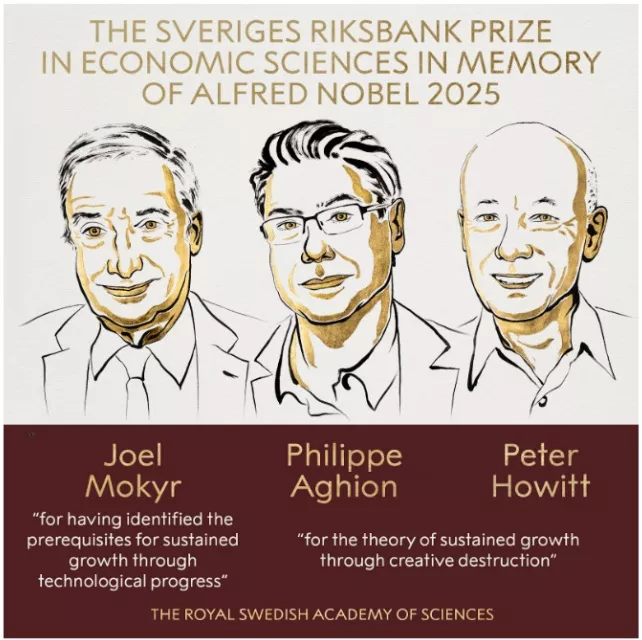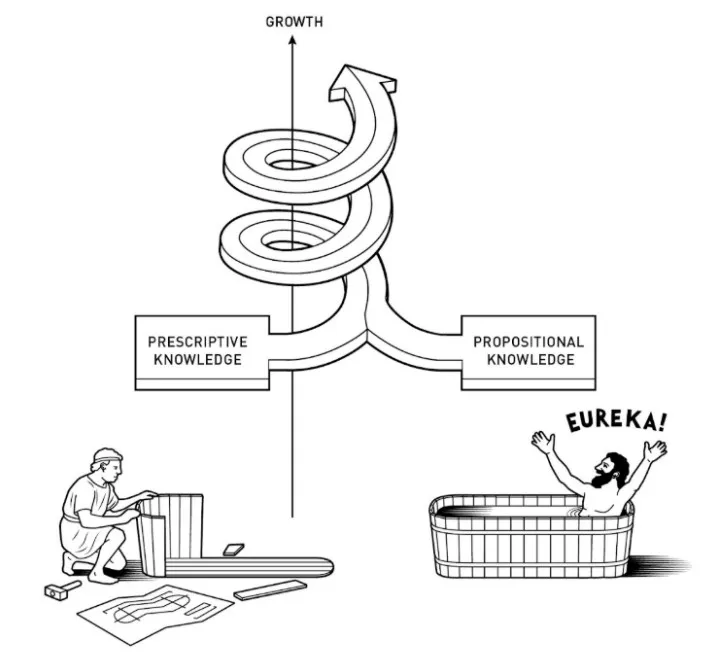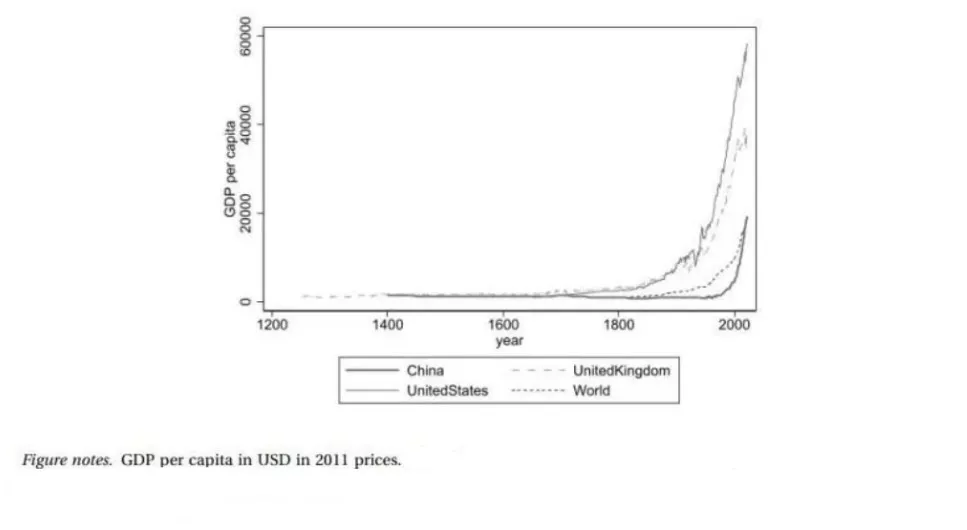The 2025 Nobel Prize in Economic Sciences has been awarded to Joel Mokyr, Philippe Aghion, and Peter Howitt for their pioneering work explaining innovation-driven economic growth.
- Their work bridges history and mathematical theory to explain how innovation transformed global economic stagnation into sustained growth over the past two centuries.
The Laureates and Their Contributions

| Laureate |
Notable Positions |
Recognition |
| Joel Mokyr
Netherlands |
Professor, Northwestern University, Evanston, IL, USA; Eitan Berglas School of Economics, Tel Aviv University, Israel |
Awarded for identifying the “prerequisites for sustained growth through technological progress.” |
| Philippe Aghion
France |
Professor, Collège de France and INSEAD, Paris, France; The London School of Economics and Political Science, UK |
Jointly recognised for their theory of sustained growth through creative destruction. |
| Peter Howitt
Canada |
Professor, Brown University, Providence, RI, USA |
Joel Mokyr’s Contribution: Knowledge as the Basis of Growth

- Core Idea: Mokyr identified useful knowledge as the engine of modern economic growth. He divided it into two components:
- Propositional Knowledge: Understanding why natural phenomena occur.
- Prescriptive Knowledge: Knowing how to apply this understanding in practice.
- Historical Transition:
- Before the Industrial Revolution, innovation lacked practical application due to weak linkages between theory and engineering.
- The Scientific Revolution (16th–17th centuries) changed this through measurement, experimentation, and reproducibility, enabling feedback between theoretical and applied knowledge.
 Examples:
Examples: -
- The steam engine’s evolution is driven by the understanding of atmospheric pressure.
- Steel production improvements via chemical understanding of oxygen-carbon interaction.
Policy Implication
- Sustained growth requires technically skilled workers who can translate ideas into products.
- Governments must invest in skilling, R&D, and openness to innovation, while managing resistance from groups threatened by technological change.
Aghion–Howitt Model: Creative Destruction and Growth
Joseph Schumpeter’s Theory of Creative Destruction
- Joseph Schumpeter, an Austrian-American economist, introduced the concept of “Creative Destruction” in his 1942 book “Capitalism, Socialism and Democracy.”
- It refers to the process by which innovation revolutionizes the economic structure, destroying old industries and creating new ones.
Core Idea
- Economic growth occurs through a cycle of innovation, where new technologies and methods replace outdated ones.
- This constant renewal leads to both progress and disruption — older firms and jobs may vanish, but more efficient industries emerge.
Examples
- The automobile industry replaced horse-drawn carriages.
- Digital photography destroyed the film camera market.
- Online retail and fintech are reshaping traditional banking and commerce today.
|
- Concept: Built a mathematical model around Joseph Schumpeter’s theory of creative destruction, showing how innovation drives growth through replacement of outdated technologies.
- Mechanism:
- Firms invest in R&D to develop innovations and gain temporary monopoly power.
- New innovations replace old ones, redistributing profits but raising productivity at the societal level.
- Policy Challenge:
- Balancing R&D incentives—should governments subsidise innovation?
- Two opposing trends:
- Support R&D: Society benefits even from obsolete technologies.
- Restrain Excess R&D: New innovations may only bring marginal gains while concentrating profits.
- Together, their insights underline that long-term prosperity depends not only on innovation but also on institutions that enable competition, learning, and equitable diffusion of technology.
- Outcome: Their model helps determine optimal R&D levels and informs policies on innovation subsidies, patent laws, and competition regulation.
PW OnlyIAS ExtraEdge
Relevance for India
The Nobel insights resonate with India’s development path, where innovation and institutional support are vital for productivity-led growth.
- Initiatives like Anusandhan National Research Foundation, Atal Innovation Mission, Start-Up India, PLI Schemes, and Digital India reflect attempts to build the idea-to-industry ecosystem Mokyr envisioned.
- R&D investment (0.64% of GDP) remains low compared to advanced economies, underscoring Aghion–Howitt’s emphasis on state-backed innovation incentives.
- As India transitions to a knowledge-based economy, managing creative destruction through re-skilling and social protection becomes critical.
|
![]() 14 Oct 2025
14 Oct 2025



 Examples:
Examples: 
